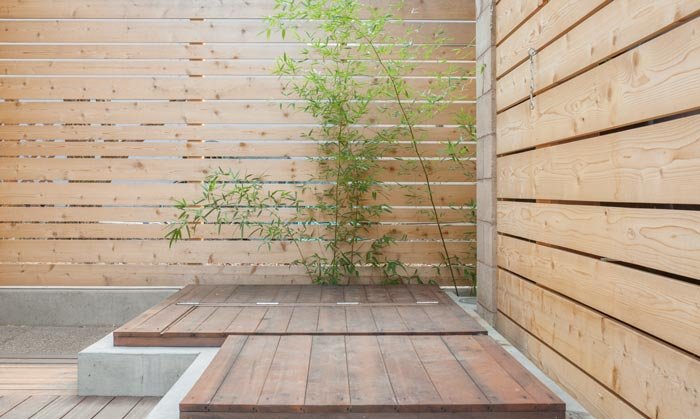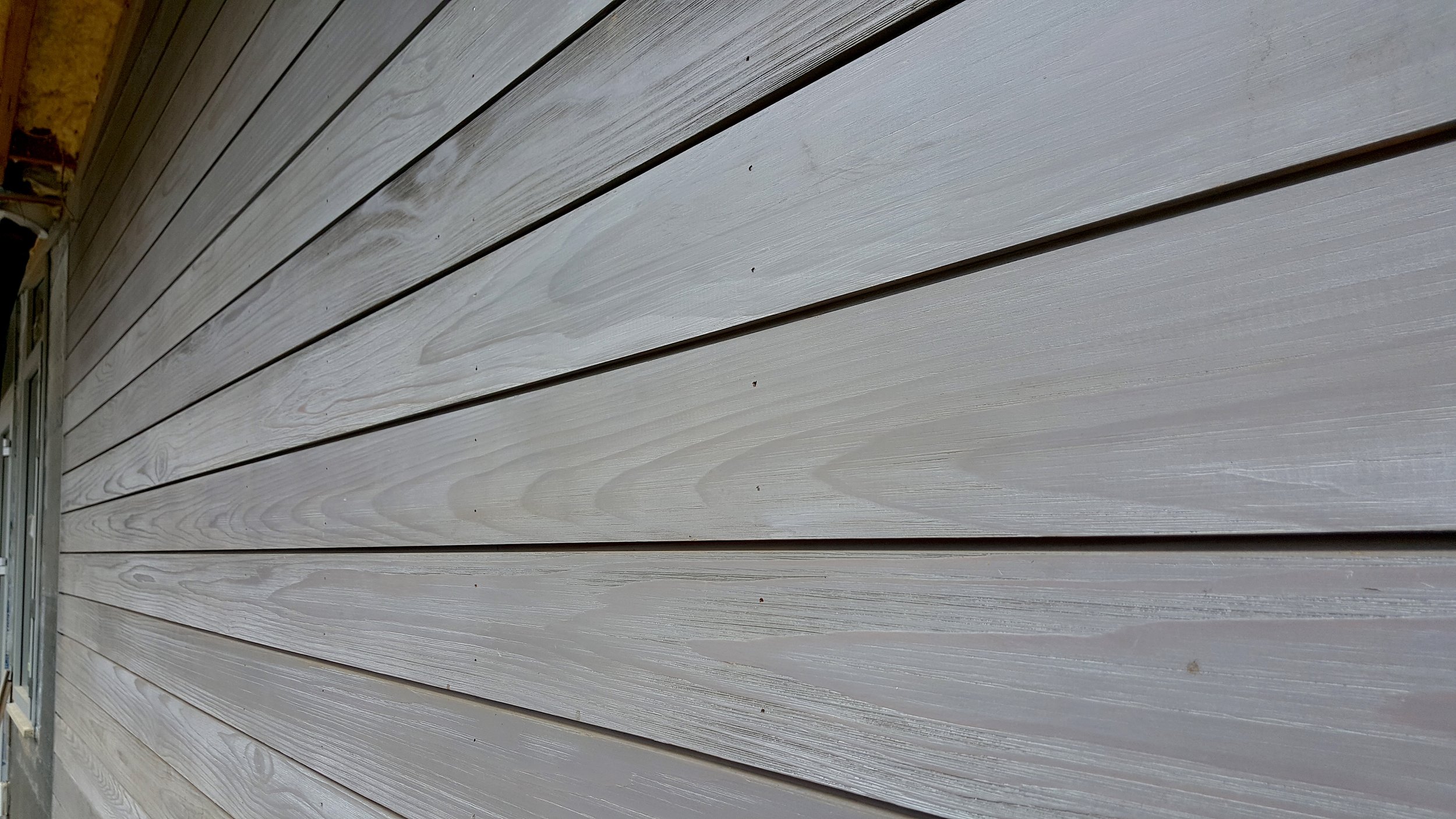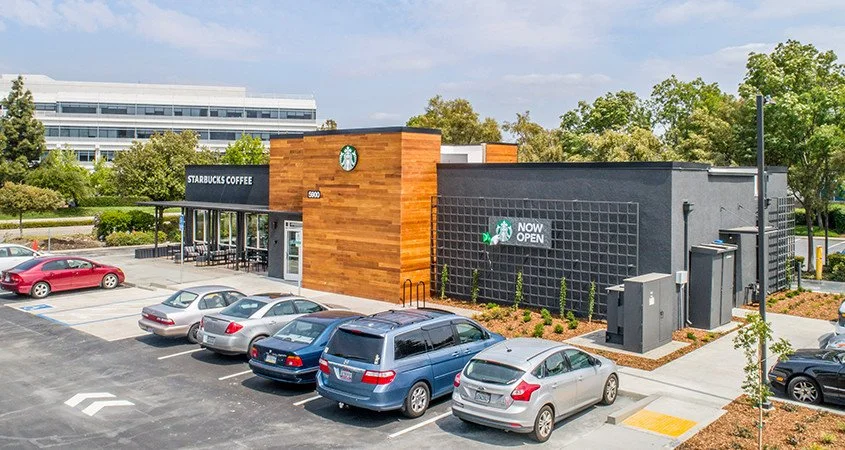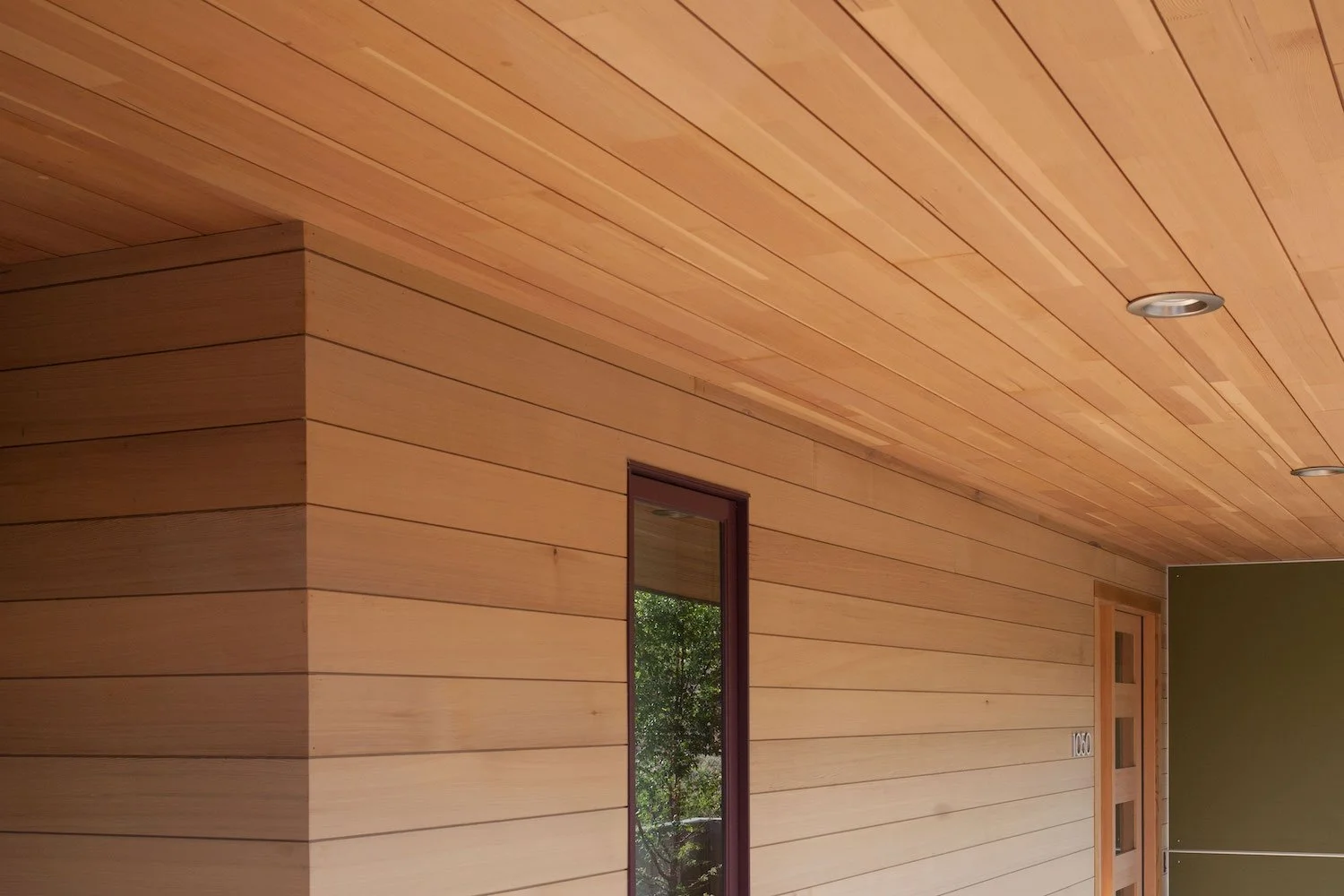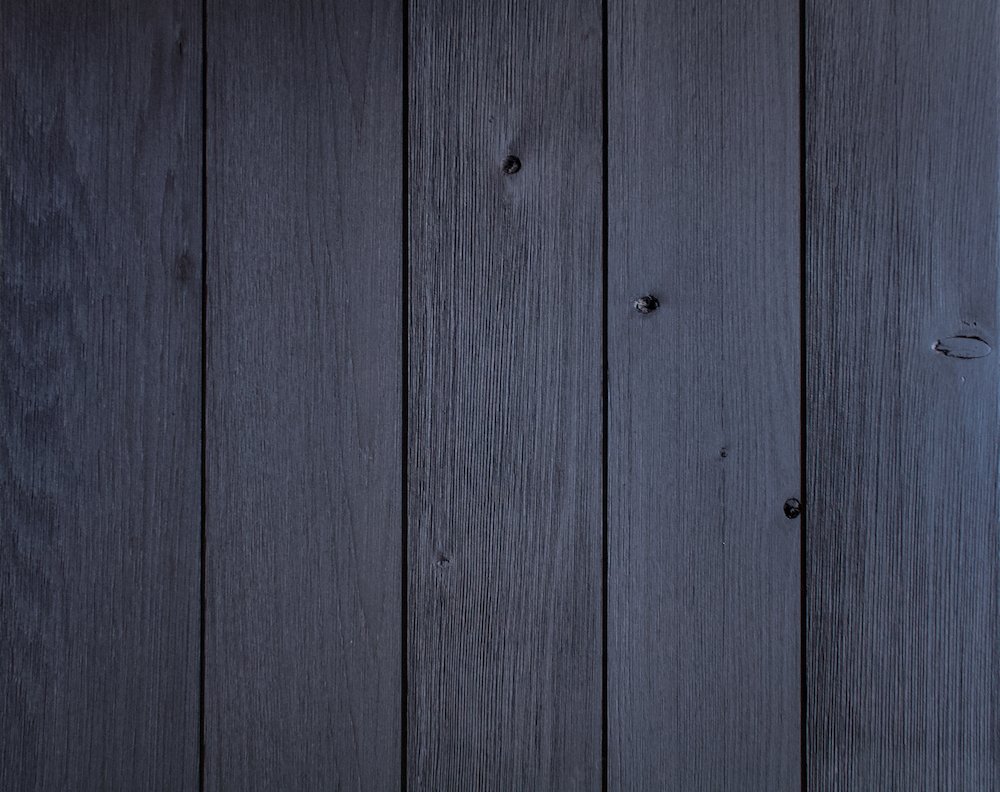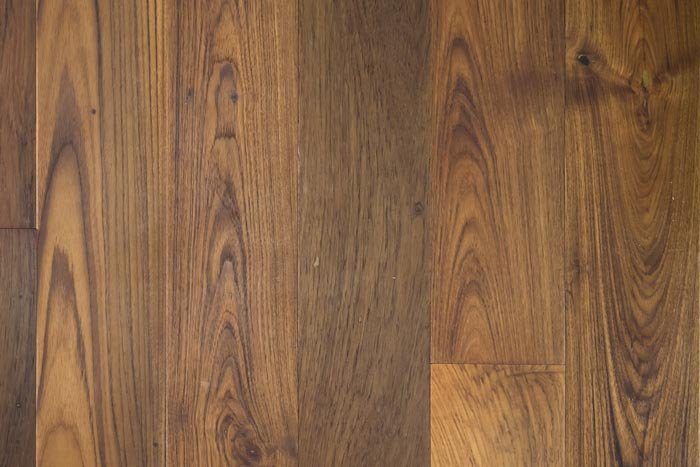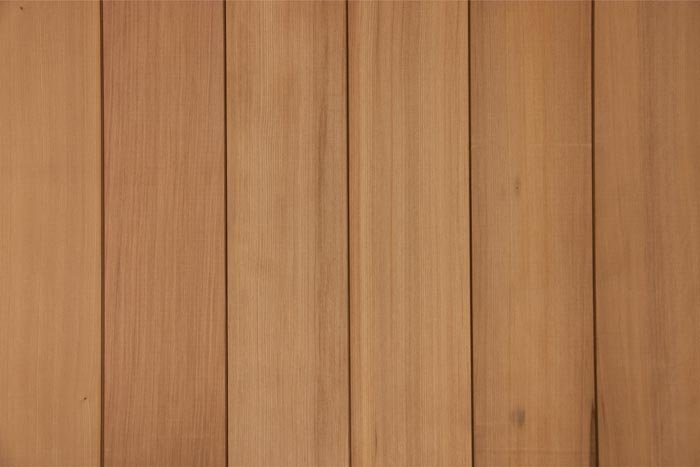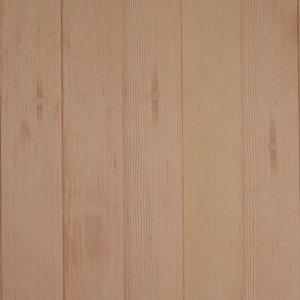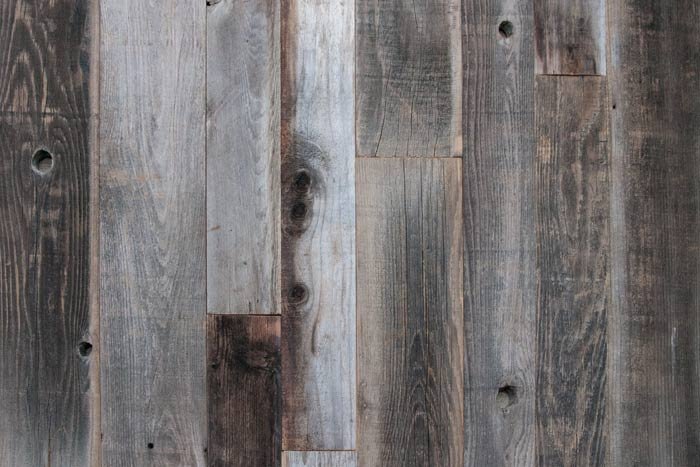All About Exterior Wood Finishes & Stains
Choose the right exterior wood finish that will look good and stay good for the long haul
Reclaimed exotic hardwood decking
Custom Zane Grey Wood Siding for private residence
Reclaimed Sakhay Teak siding at Starbucks location
Reclaimed cedar and fir exterior siding and ceiling cladding
Reclaimed Exterior Wood Siding and Decking Options
Why Use Exterior Finishes?
Exterior wood siding and decking can last a long time with proper maintenance, providing a beautiful outdoor accent. Wind, rain, snow and insect damage can wear them down in a hurry, so it is important to find the right finish that will protect the wood while working with the desired look and maintenance requirements.
There are a few important factors to consider when choosing the right exterior finish, including application, stain type, wood species, color, and transparency, all of which affect the overall outcome.
Application
The application of the wood may affect the desired finish. Separating application into vertical, horizontal or furniture applications can help determine the right finish.
For example, decking lays flat and is more susceptible to UV damage and standing water, as well as foot traffic. In this case, a penetrating stain will offer higher UV protection and water protection than a non-penetrating stain for the application.
For other outdoor applications, like fences and furniture, a transparent stain may be a better choice, which can bring out the natural wood grain and enhance the aesthetic appeal.
Types of Exterior Finishes
Exterior stains can be separated into two main categories: film-forming and penetrating stains. Film-forming stains, including primers, deck paints, and heavily pigmented stains, protect the wood by creating a film on top of the surface. These often have higher UV protection an may last longer, though maintenance needs are higher than penetrative stains.
Penetrative stains infuse into the wood rather than forming a film on top, and are easier to maintain at home, though they require more frequent maintenance.
Exterior Oil Stain:
Oils stains penetrate deep into the wood, which can prolong overall longevity. Exterior oil stains can also enhance the grain of the wood, bringing out rich colors and textures depending on the desired aesthetic. These oil-based exterior stains can be difficult to clean up, however, and may require mineral spirits.
Though more penetrative, oil stains may fade quicker than water-based stains, requiring more frequent re-finishing.
Water-based/acrylic stain:
These exterior finishes are water-based, which makes them easy to use and clean up (with some soap and water). They are typically low-VOC and safer to work with, though they are not as penetrative as oil stains.
Hybrid Stain:
A hybrid stain is made from a combination of oil base and acrylic components, harnessing the penetrative qualities of an oil stain while maintaining the easy cleanup up a water-based stain.
Color
There is a wide range of color options for exterior stains, making is easy to find the perfect look. Note that darker colors absorb more heat with sun exposure, while lighter colors reflect UV. Lighter colors can brighten up an outdoor space while darker colors can create a cozy, more intimate feeling. View our range of exterior wood siding and decking options here.
Transparency
Stains come in a variety of transparencies, from fully transparent to opaque and solid. The more solid the transparency, the more long-lasting the stain.
Transparent stains are completely see-through, allowing the wood to maintain its natural look and grain pattern. Transparent stains, however, do not last as long as more opaque options, requiring more maintenance and refinishing over time.
Semi-transparent and semi-solid stains provide more options for finding the perfect look and coverage for the wood. Opaque finishes, like our Deep Sumi Cedar, help protect the wood from UV damage and surface cracking of the wood.
Wood Species
It is helpful to note the type of wood used for the exterior project, as certain species take on finishes differently than others. Softwoods like cedar, redwood and fir absorb stains more quickly, but also have a tendency to appear blotchy with certain stains. Hardwoods, like oak and teak, are more smooth and consistent with their grain patterning when finish is applied.
Exterior Finish Maintenance and Care
All types of wood finishes require some maintenance, and it is important to refinish exterior wood siding and decking to prolong the lifespan. Some finishes, like our Deep Sumi Cedar finish can last 8-10 years before requiring a refinish.
So when should you refinish your exterior wood?
The answer is: it depends. It is hard to predict maintenance cycles since several factors are involved, which can be different in every instance. Factors like installation location (vertical or horizontal), site conditions (is your installation coastal, dry, wet, humid, southerly facing, protected by overhangs, etc), finish type (translucent, opaque), etc. should all be taken into consideration.
All of these factors will affect how frequently you may need to perform maintenance or re-finishing. Most finish manufacturers will give a wide range, and then advise to perform maintenance when the finish starts to look worn or faded. It is important to-refinish before the finish completely fails, as that will entail quite a bit more work.
Understanding the benefits and considerations for each type of exterior finish and stain can help you decide which will be the right choice for your exterior siding, decking or fencing project.
More questions? Reach out to our team at Anthology Woods for more information. We are happy to help!

